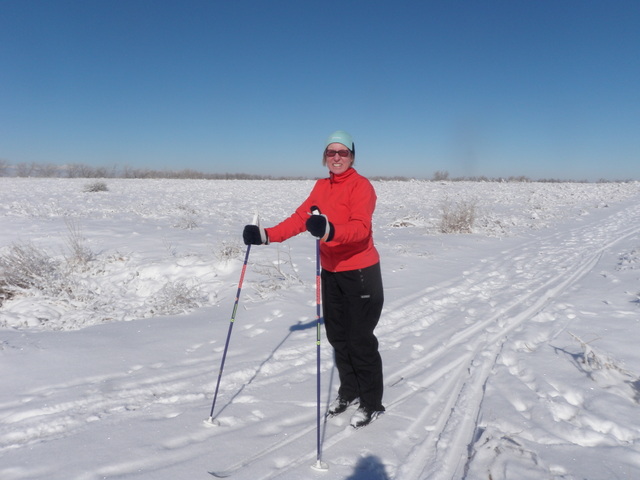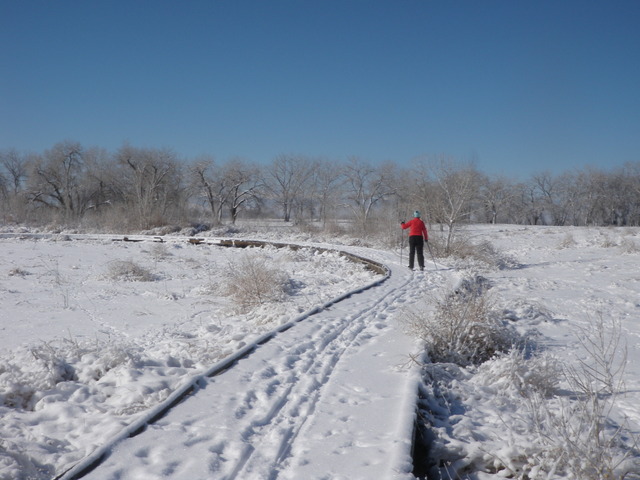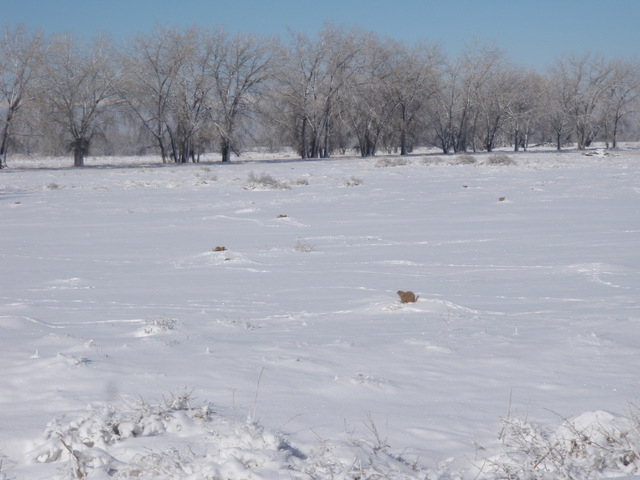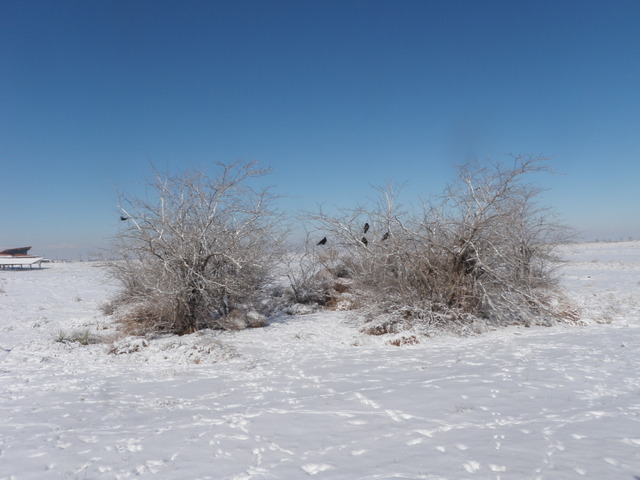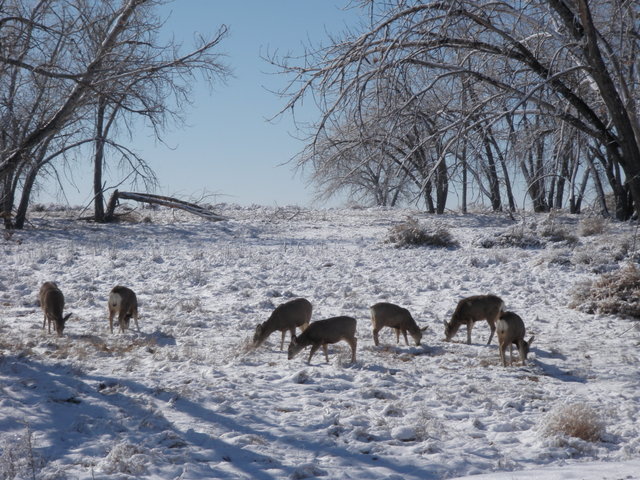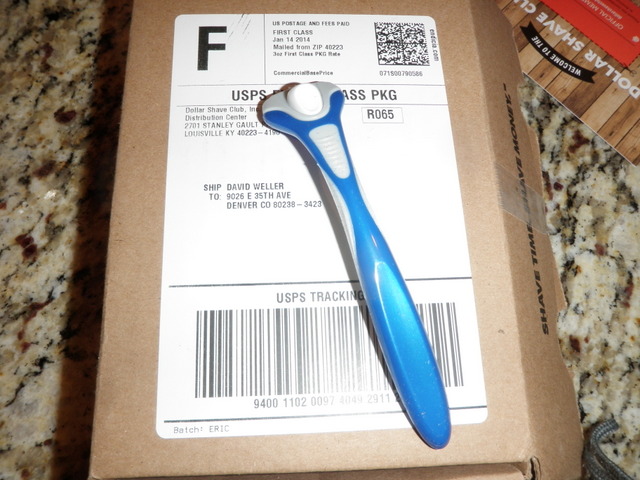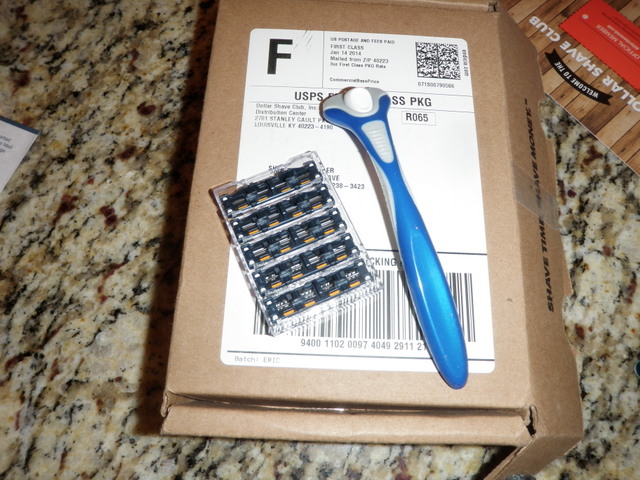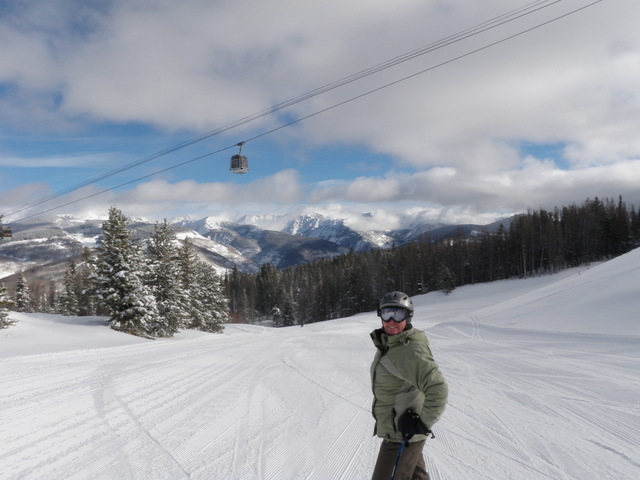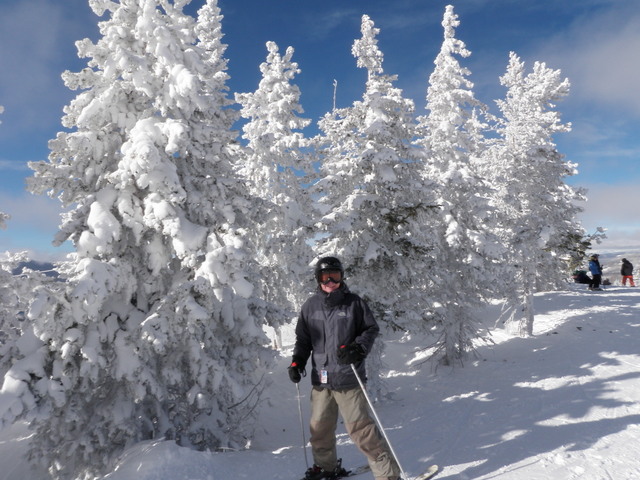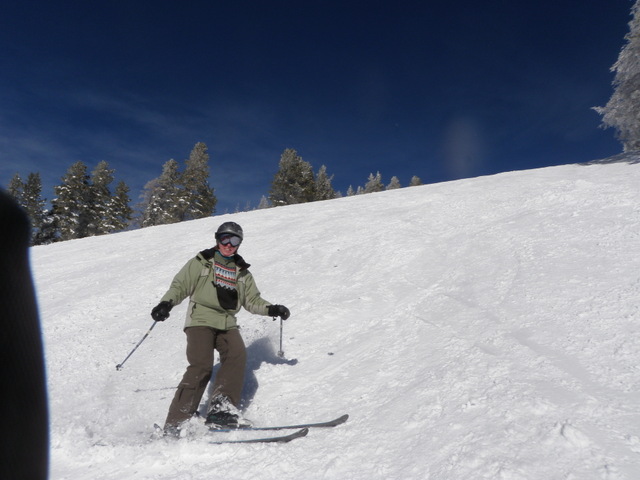Time: 3:30PM – 5:30PM
Location: Tailwater below Stagecoach Reservoir
Fish Landed: 5
Having finally connected with Steve at our parking place along Bear River, we both agreed that we had sampled enough of Bear River to satisfy our collective curiosity, and we were anxious to move on. Steve told me on the drive to Steamboat Springs on Tuesday that the tailwater below Stagecoach Reservoir had changed dramatically since the stream improvement work was completed in 2013. He suggested that we stop at that magnificent fishery on our return from Bear River so that I could judge it for myself. Steve commented that the stream improvement work straightened the stream and removed rocks and current breaks. I was led to believe that the opposite is true of stream improvement; rocks and structure are typically added to straight and shallow featureless water. I was very curious to understand what Steve meant by these observations.
Only two or three other cars populated the normally crowded lot near the Yampa River tailwater below Stagecoach Reservoir, and the fishermen that were present appeared to be crowding into the upper unimproved stretch of water. Steve and I remained in our waders and our rods remained strung from our Bear River expedition, so we were on the water in a short amount of time. As we negotiated the well worn trail to the lower portion of the public water, Steve realized that he forgot to remove his phone from his shirt pocket, and not wishing to risk water damage, he returned to the car. This allowed me to access the water first, and I began fishing just below the only large bend in the upper catch and release section.
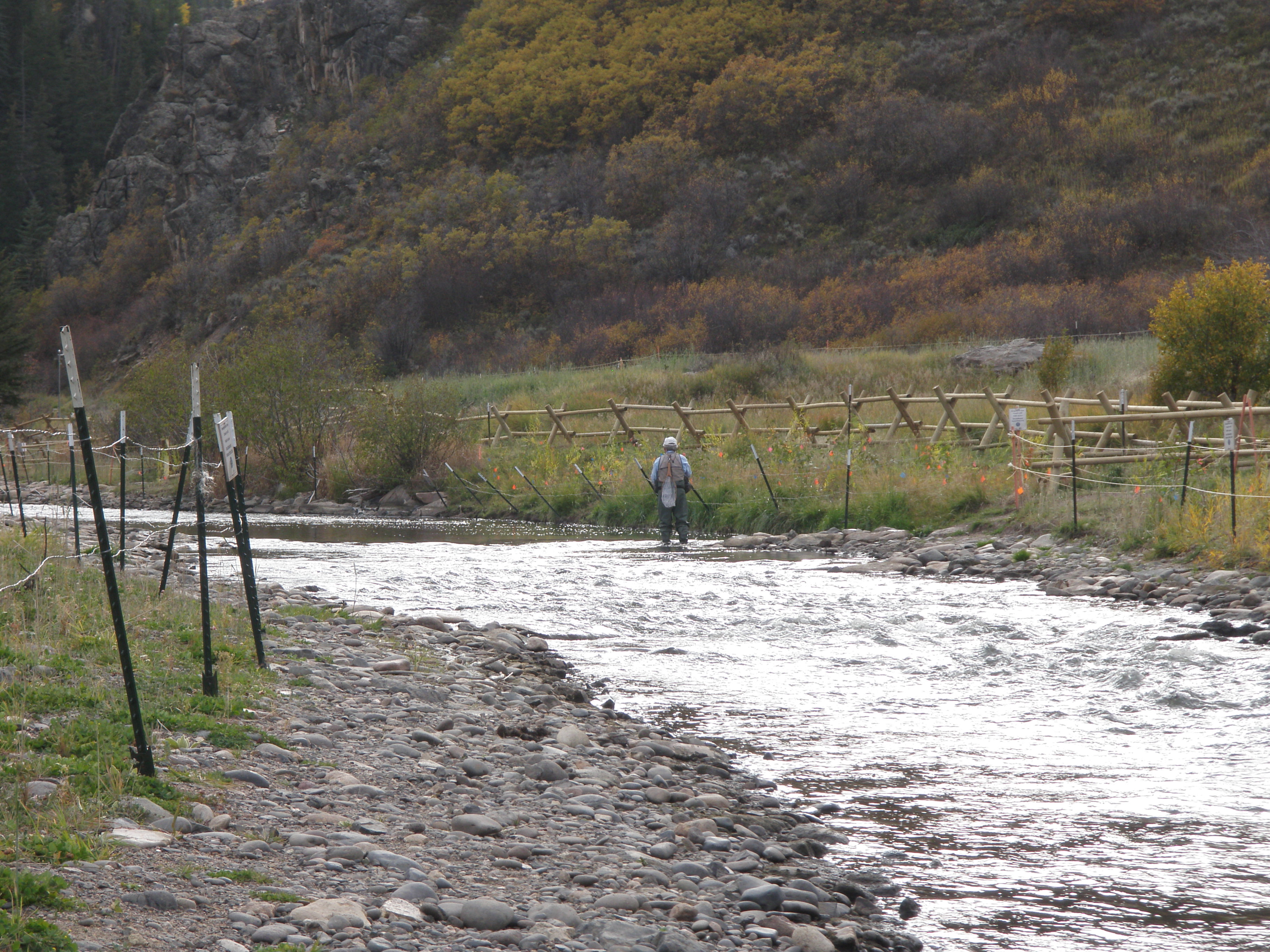
Steve Sneaks Up on Pool
The state park and department of wildlife personnel went to great pains to re-vegetate the land bordering the river by hammering unattractive metal posts into the bank and then stretching metal fence wire in between. The fence was so close that it leaned over the stream a foot or two in many places. There were well marked chutes between the fenced areas to allow fishing access. It reminded me of the crowd control mazes that exist at amusement parks and ski lift lines.
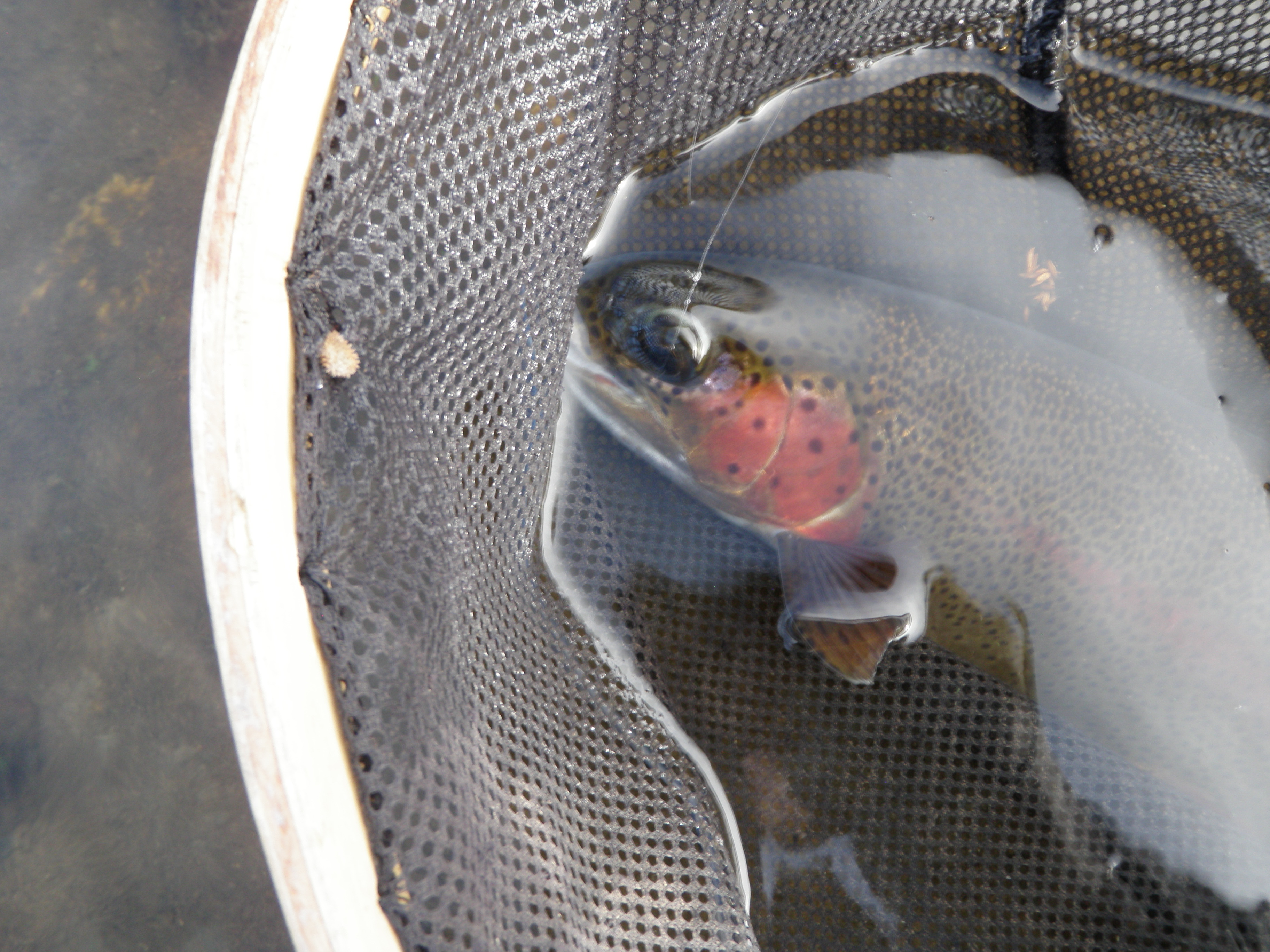
Yampa Tailwater Rainbow
The portion of the stream where I began was representative of the stream improvement area. It appeared to be a deep trough, and the main current began at the center and then angled to the far bank where the river curved. Once the current deflected against the bank closest to the parking lot, it ran for another thirty feet before tailing out and continuing. The mangled Charlie Boy hopper remained on my line from the end of my fishing time on Bear River, so I decided to stick with it for a bit, and the ultra zug bug dropper continued to dangle below the hopper.
The Charlie Boy hopper is an interesting story. I am in a perpetual quest to find the ideal grasshopper imitation. Earlier in my fly fishing career, my preferred hopper imitation was a yellow Letort hopper, and I enjoyed tremendous success with this fly. But as time went by, I grew more and more disillusioned with the dubbed body of the Letort hopper and yearned for an equally effective imitation that was more buoyant. The Letort hopper required frequent trips to my sleeve to sop up the absorbed water and then subsequent dunkings in my dry shake canister.
Jane bought me a fly tying book authored by Charlie Craven, and there was a chapter for the Charlie Boy hopper. Several winters ago I tied a batch of tan and yellow Charlie Boys and anxiously awaited the arrival of fishing season to test the effectiveness of this new pattern. The recipe in the book included unknotted rubber legs, but I have noticed that Charlie’s latest directions on his web site incorporate knotted rubber legs. At any rate, the Charlie Boy served the purpose of floating several medium weight nymphs without sinking, and it was very visible in various difficult lighting situations. Unfortunately it rarely produced fish.
For this reason I continued searching for alternatives, and on a guided fishing trip with Taylor Edrington, I asked him what his favorite hopper pattern was. Taylor was quick to reply “pool toy”. I greatly value Taylor’s opinions on matters that relate to fishing, so I dutifully returned to my vise the following winter and churned out 10-15 pool toys in colors ranging from yellow to tan. The next summer I began using pool toys as my number one hopper imitation, and the Charlie Boys began gathering dust in my large plastic fly bin.
During 2014 I continued using pool toys, but for various reasons including tree branches and broken off fish, my supply dwindled to the point that I was concerned I would have enough for the prime late summer hopper season. On several outings when I needed a large buoyant fly to support several nymphs, I decided to use a tan Charlie Boy since I had a bunch of them, they were visible and buoyant, and I was just using them as in indicator. Guess what happened? Fish started smashing the Charlie Boy! The Charlie Boy was staging a revival that put all of Brett Favre’s comebacks to shame. On two trips to the Arkansas River in October the brown trout craved the tan Charlie Boy as I tossed it upstream along the bank. Not only did they favor the Charlie Boy pattern, but I was catching these fish on the same fly.
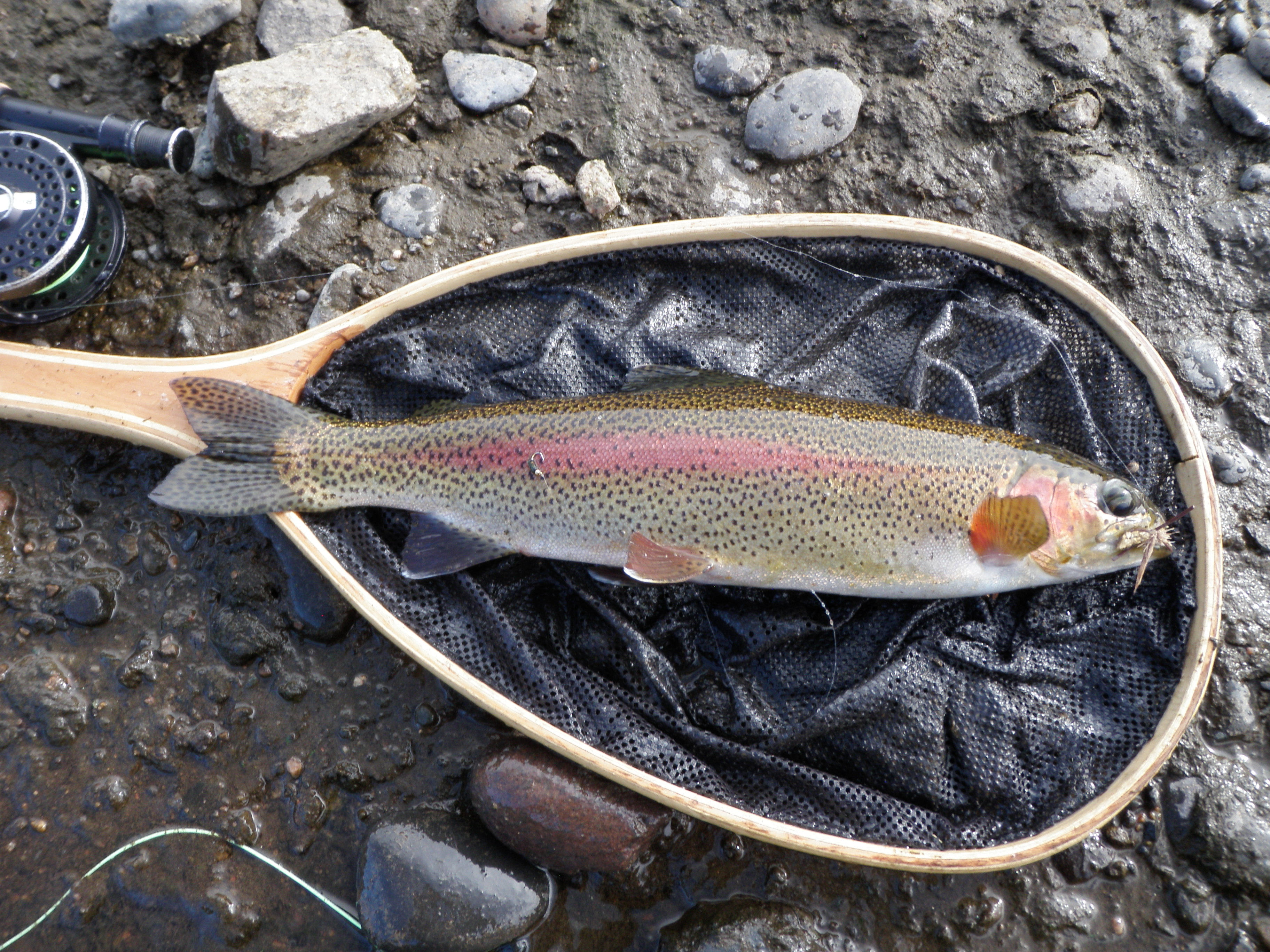
Beautiful Fish Fell for Charlie Boy Hopper
By the time I tied this very same tan Charlie Boy to my line on Bear River, it exhibited numerous holes and tears from the teeth of a long line of ravenous fish. The Bear River usage served to mangle my treasured Charlie Boy even more. Now I was casting my poor workhorse hopper to the inside seam of the main current on the Yampa River. At 3:30 in the afternoon I was certain that it would only be an indicator, and despite its ragged appearance, it still floated reasonably well. Guess what happened? I’m sure with that history lesson on the Charlie Boy, you must have guessed the answer. As the Charlie Boy danced along the inside edge of the current seam and drifted back toward me, a large silvery missile with a crimson flank dashed to the surface and inhaled it. I could not believe my eyes, but somehow I reacted in an appropriate manner and set the hook in the lip of a hungry rainbow trout. The rainbow streaked up and down the slow moving water next to the faster current several times until I could apply side pressure and slide my cracked net beneath it.
I expected difficult fishing in the late afternoon using tiny midge imitations and in my first section of water, I landed a sixteen inch brightly colored rainbow trout on a large foam hopper imitation. Apparently the fishing gods were rewarding me for my patience on Bear River. I moved on and approached another section where the main current flowed down the center of the river in a deep run. This created slack water on both sides, but the area between the opposite bank and the center current featured an eddy and a small white foam patch. I flicked the Charlie Boy and ultra zug bug along the downstream edge of the eddy, and as the top fly slowly floated upstream next to the foam, it disappeared. I set the hook and felt significant weight, so I responded by battling a second sixteen inch rainbow. This tough fighter sucked in the ultra zug bug, and I was quite surprised to experience this exciting action late in the afternoon when there did not appear to be any significant source of food present.
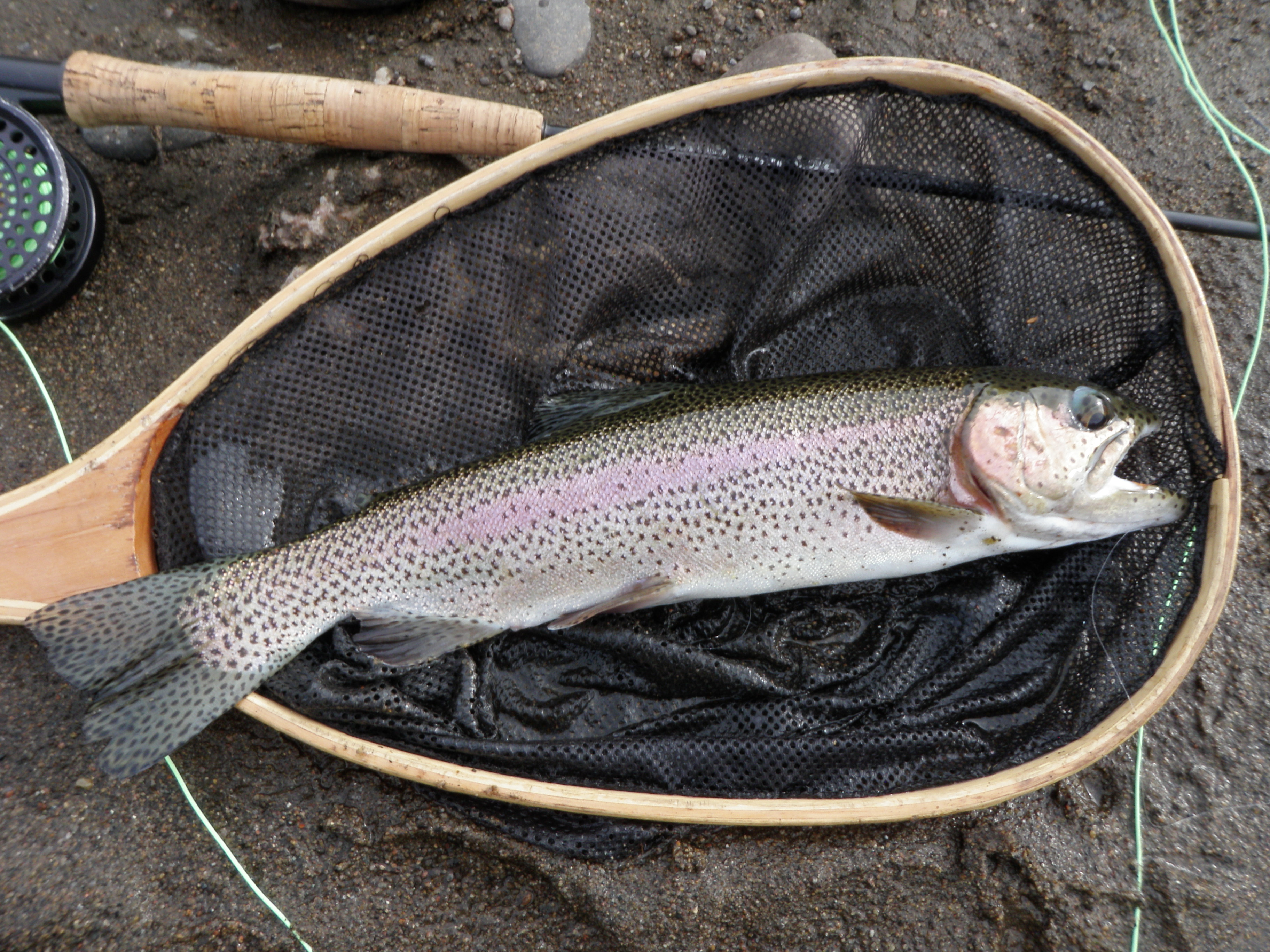
A Second Gorgeous Rainbow from the Yampa
Once again I moved upstream, but now my success rate fell, and I began to make numerous casts without any response. I decided to add a third fly to hopefully attract more attention and spied a gray scud in my fleece patch that I purchased in Viroqua, WI. The Yampa tailwater typically contains quite a bit of aquatic vegetation, and that usually suggests scuds, so I added the gray scud to my lineup. I approached another deep run in the center of the stream and ran my three flies along the seam and witnessed another dip of the Charlie Boy. Could the scud have made the difference already? I managed to land this fish, and it turned out to be a thirteen inch brown that fell for the ultra zug bug. The late afternoon time on the Yampa was proving to be icing on the cake.
I continued on, but now I was covering attractive water, and I was not generating any response so I clipped off the gray scud and replaced it with an orange version, but this also was ignored by the residents of the Yampa River. I did observe a fair amount of midge activity in the cool late afternoon air with shadows beginning to lengthen across the river, so I opted to follow the conventional wisdom and tied on a zebra midge as my bottom fly. By now I arrived in a slow deep pool and fish were sipping something sporadically on the surface. I cast the Charlie Boy one third of the distance up the pool, and as it slowly drifted back toward me, it dipped and I set the hook and discovered a small seven inch rainbow had sipped the zebra midge. It was not much of a fish, but at least I now knew that the tiny zebra midge was viewed as a viable source of food on the Yampa River in the late afternoon.
A short stretch of faster water separated the slow deep pool from another nice pool closer to the dam. The second pool was above the stream improvement area, and it exhibited many of the features that were prominent in the entire tailwater prior to stream reconstruction. There were numerous large boulders with downstream pockets, and the current split into many areas and did not just run down the center of the river. But I’m getting ahead of myself. In the faster water below the second classic pool, I landed a nine inch brown trout that followed the lead of the rainbow and grabbed the zebra midge just as it started to swing at the tail of the drift.
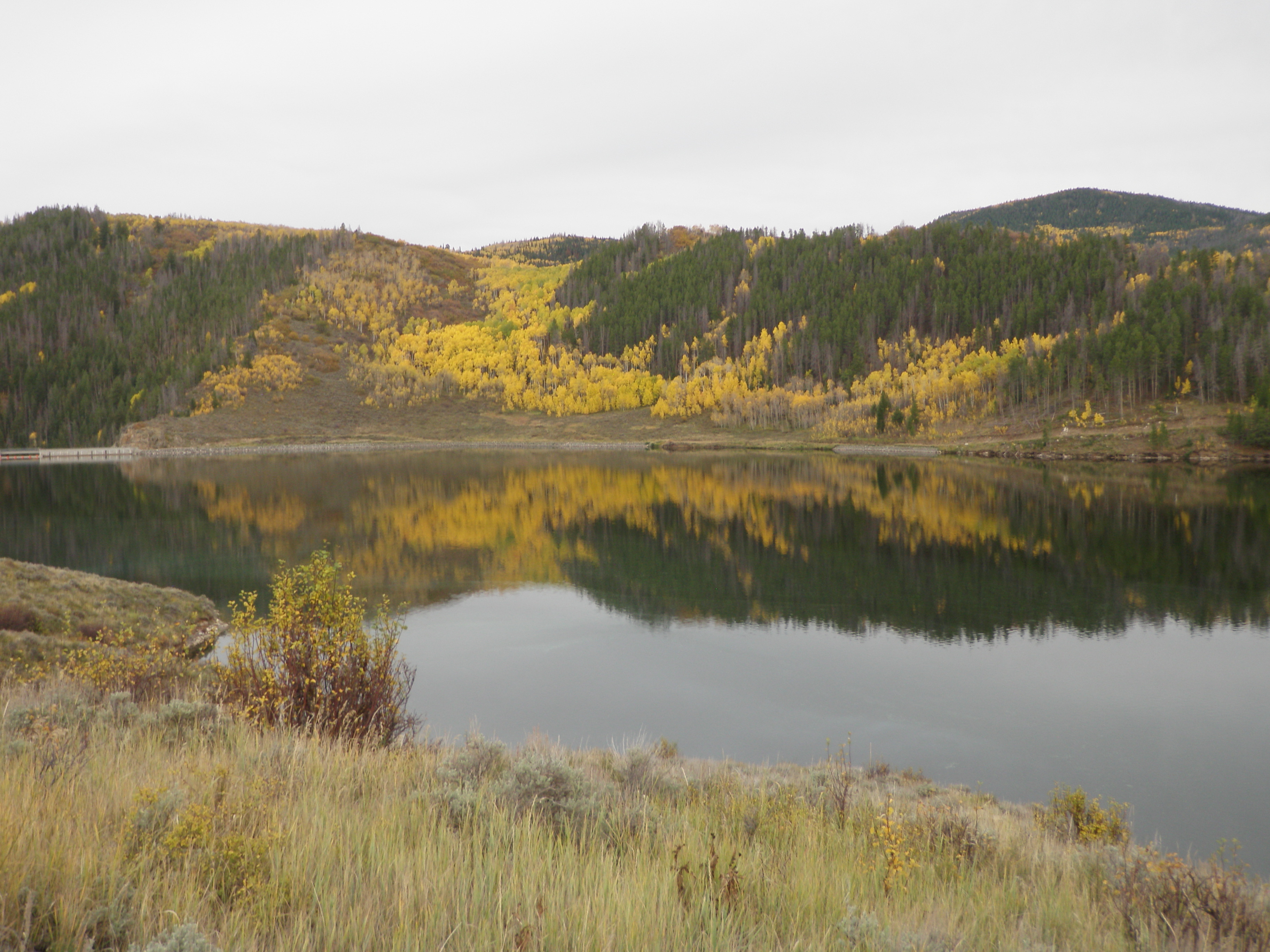
Stagecoach Reservoir Late in the Afternoon
I was quite optimistic as I waded into the tail of the classic pool, but my optimism was misplaced as I covered the entire area with casts and received no response. Steve walked up from below, and his fly was in the hook keep, so we decided to call it quits. It was a pleasant day weather wise with temperatures around 60 degrees when we began on Bear River at 10:30AM, and they probably reached a high in the upper 60’s. I wore a fleece all day and never felt too warm. Landing five fish from the notoriously difficult Yampa tailwater was a pleasant surprise, and I felt rather satisfied as we drove back to Steve’s condo in Steamboat Springs.
Like this:
Like Loading...






